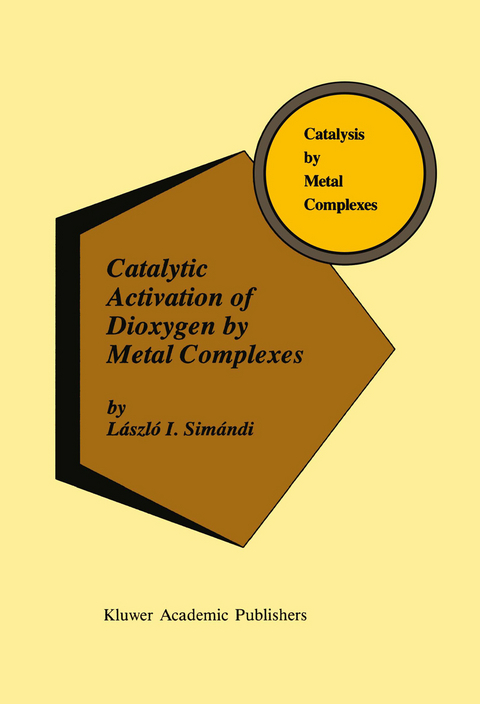
Catalytic Activation of Dioxygen by Metal Complexes
Springer (Verlag)
978-94-010-5265-8 (ISBN)
The activation of dioxygen by metal ions has both synthetic potential and biological relevance. Dioxygen is the cleanest oxidant for use in emission-free technologies to minimize pollution of the environment. The book gives a survey of those catalyst systems based on metal complexes which have been discovered and studied in the last decade. They activate molecular oxygen and effect the oxidation of various organic compounds under mild conditions. Much of the recent progress is due to a search for biomimetic catalysts that would duplicate the action of metalloenzymes. Mechanistic aspects are emphasized throughout the book. An introductonary chapter reviews the chemistry of transition metal dioxygen complexes, which are usually the active intermediates in the catalytic reactions discussed. Separate chapters are devoted to oxidation of saturated, unsaturated and aromatic hydrocarbons, phenols, catechols, oxo-compounds, phosphorus, sulfur and nitrogen compounds.
1. Dioxygen complexes.- References.- 2. Catalytic oxidation of saturated hydrocarbons with O2.- Summary.- References.- 3. Catalytic oxidation of alkenes with O2.- Summary.- References.- 4. Catalytic hydroxylation of aromatic hydrocarbons with O2.- Summary.- References.- 5. Catalytic oxidation of phenols.- 5.1. Base-catalyzed oxidation of substituted phenols.- 5.2. Metal complexes as catalysts for oxidation of alkyl-substituted phenols 200.- 5.3. Catalytic oxidative coupling of phenols.- 5.4. Catalytic hydroxylation of phenols (tyrosinase models).- Summary.- References.- 6. Catalytic oxidation of catechols.- 6.1. Discovery and types of oxygenases.- 6.2. Catalytic oxidative dehydrogenation of catechols to o-quinones.- 6.3. Catalytic oxidative cleavage of catechols.- Summary.- References.- 7. Catalytic oxidation of alcohols with O2.- 7.1. Dehydrogenation of alcohols without O2.- 7.2. Oxidative dehydrogenations with O2.- Summary.- References.- 8. Catalytic oxidation of diols and polyols with O2.- 8.1. Ascorbic acid.- 8.2. Diols.- 8.3. Polyols and sugars.- Summary.- References.- 9. Catalytic oxidation of aldehydes and ketones with O2.- 9.1. Aldehydes.- 9.2. Acetals.- 9.3. Ketones.- 9.4. Acyloins.- Summary.- References.- 10. Catalytic oxidation of nitrogen compounds with O2.- 10.1. Dehydrogenation of nitrogen-containing compounds.- 10.2. Oxygen insertions into nitrogen-containing compounds.- Summary.- References.- 11. Oxidation and co-oxidation of tertiary phosphines.- Summary.- References.- 12. Oxidation of sulfur compounds.- 12.1. Catalytic oxidation of thioethers.- 12.2. Catalytic oxidation of thiols.- Summary.- References.- Abbreviations.
| Reihe/Serie | Catalysis by Metal Complexes ; 13 |
|---|---|
| Zusatzinfo | IX, 397 p. |
| Verlagsort | Dordrecht |
| Sprache | englisch |
| Maße | 152 x 229 mm |
| Themenwelt | Naturwissenschaften ► Chemie ► Anorganische Chemie |
| Naturwissenschaften ► Chemie ► Organische Chemie | |
| Naturwissenschaften ► Chemie ► Physikalische Chemie | |
| ISBN-10 | 94-010-5265-4 / 9401052654 |
| ISBN-13 | 978-94-010-5265-8 / 9789401052658 |
| Zustand | Neuware |
| Haben Sie eine Frage zum Produkt? |
aus dem Bereich


